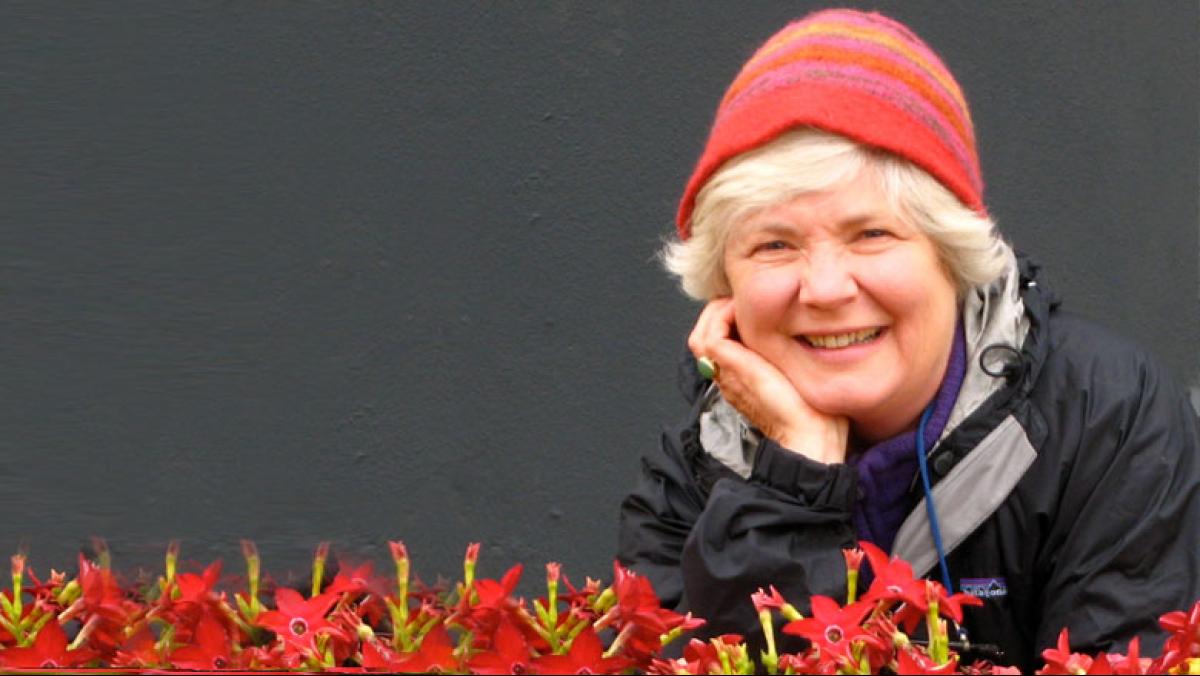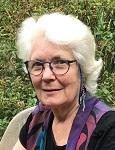Where do poems come from? Where do dreams come from, and artists’ ideas, and mathematical proofs, and inventors’ projects? The creative process has multiple sources, and often a protracted timeline, including times when it seems as if you’re doing nothing at all.
“Incubation” is the label for this part of the process. And part of being creative is trusting that something inside of you is keeping the project alive. Somewhere, there’s a solution, image, idea, phrase, or feeling gestating.
Different poets will have different sources for creativity, and, for many of us, poems often originate in place.
Mary Oliver has her Blackwater Pond that she visited so many mornings, slipping into the lives of the creatures and the sights there. In my daily life I have the path to Picnic Point near the UW–Madison campus and the prairies, rivers, and marshes of Wisconsin. And every winter I return to the Canadian Rocky Mountains of Banff in search of poems.
If place is a trusted source, wild places make the prospect of finding a poem even more variable—it can take ten years to stumble on all the elements needed; or the poem can arrive even as you run along the Picnic Point path.
Or you will remember a landscape.
Sometimes memory isn’t enough and you need to return to a place. Two of my poems about the same piece of land in Wisconsin’s Marquette County, written thirty years apart, visit and revisit a hillside remnant prairie and oak woods about two miles from naturalist John Muir’s boyhood home, a place where my first husband and our young children camped on weekends.
The first poem I carried with me for ten years in my pocket notebook as nothing more than the last two lines of a title. I walked the hill each summer, thinking that John Muir had lived nearby.
But I knew I needed more than this vague thought for a poem.
His autobiography of growing up there, The Story of My Boyhood and Youth (1913), gave me a sense of the young Muir’s hard life, and the sensation that I might be crossing a path he once walked looking for bees.
Still not enough.
I set myself to reading more books about Muir’s life and even paid a visit to the Wisconsin Historical Society in search of a device he created in 1862 while a student at the University of Wisconsin.
In his autobiography, Muir describes the “clockwork desk” he constructed in his dorm room to help with his studies. “I invented a desk in which the books I had to study were arranged in order at the beginning of each term,” he writes,
I also made a bed which set me on my feet every morning at the hour determined on, and in dark winter mornings just as the bed set me on the floor it lighted a lamp. Then, after the minutes allowed for dressing had elapsed, a click was heard and the first book to be studied was pushed up from a rack below the top of the desk, thrown open, and allowed to remain there the number of minutes required. Then the machinery closed the book and allowed it to drop back into its stall, then moved the rack forward and threw up the next in order, and so on, all the day being divided according to the times of recitation, and time required and allotted to each study.
Only when I had time for further reading about Muir’s life, and actually saw his incredible clockwork desk, did the poem come together and the first line of its title appear:
WISCONSIN HISTORY LESSON:
JOHN MUIR ON A HILL
IN MARQUETTE COUNTYJohn Muirwalked across this hillwhen he was a boy.Bones achingfrom digging out oak grubsor hollowing out the crampeddamp wellfifty, seventy, ninetyfeet downday after dayuntil the neighbor noticedthat no more bucketswere coming upand hauled him outjust before the oxygen gave out.Head achingfrom his father’s grim message:You’re no good boy,no good unless you work;the only salvationfrom our evil natureis prayer and work;reading and educationare the devil’s temptation.Eyes achingfrom reading at three a.m.,catapulted out of bedand sleepby a contraptionof wooden scrapsto the wooden deskthat turned the pageslike clockwork,twenty minutes a book.It’s still on displayAt the Historical Society.Years later,heart aching,he walked awayfrom the educationthat wasn’t the answer;walked away from a Yosemite sawmilland a woman who wasn’t his;walked home to Wisconsin oncewhen he imaginedhis mother dying.But walkedmost of his lifetoward the High Sierras,Yosemite’s upper reaches,the Grand Canyon,toward the views that stunnedthe heart into forgivenessor forgetfulnessand peace.Talked Teddy Rooseveltinto leavingall those viewsto the nation.His own salvationforeshadowedin the aching boyseeking some ease,watching and walkingthrough the Marquette County trees,the lightshining in benedictionthrough the leaves.
Mapping the Marquette County Hill
On the forty acres of sandy hill, century-aged,remnant-sown, John Muir’s boyhood footprintscrossed the sand blow, following bees, or soI like to think; though it might have been onlythe crest of the hill he crossed, through the oak,or the turkeyfoot and little bluestem ranksthat wave there now. Small orchids, earthstars,goldenrod and blazing star were found in the sandblow, and under our shelter at the top of the hillour own sons dug in the dirt, hammered nails,grew to build their own skateboard ramp and hangin the sky like the hawk’s brief survey. And here’sthe path I wandered with my field guide, learningnames—ten new species flowering every week—here’s the place the hairy puccoon bloomed, therethe pussytoe patch, the hawkweed acres;and here’s the place we put the bench, sightlineinto Wisconsin thunderstorms, moving oppositeto lower clouds, and here’s the east toward whichthe bluestems bowed; its coordinates includethe firepit—marked “kitchen,” on our map, the paththrough the woods to the three-sided outhouse,the other path to back bedroom—Adirondackshelter where we slept to the insistent voicesof the whippoorwills, the bark of fox and coyote.Mark the fox—it had a den in the woods. And markthe whippoorwills—we saw one once on a limb,its legs so weak you could scarcely see them;and mark the trail where the ladies-slippers bloomed,past the outhouse. Mark the locust woods to the west,oak and hickory woods to north; question markfor where the owl lived, nightly questioning us. Herewe found the webs of the writing and funnelspiders, and here the walking-stick. Say that thiswas the map of our days. Say that we too walkedhere once, if the barred owl asks you.
Of course, not all poems take decades to accumulate their component materials. And, in my experience, creativity in writing poetry requires a kind of double vision: a strong intention coupled with a receptiveness to not knowing. Carrying a notebook and pencil. Even a title, an equation, a memory. Being present in loved places. Open to what comes. You too may find lines coming to you, walking our Wisconsin places—wild and otherwise.
Postscript: “Mapping the Marquette County Hill” first appeared in The Cortland Review, Issue 60 (August 2013)




